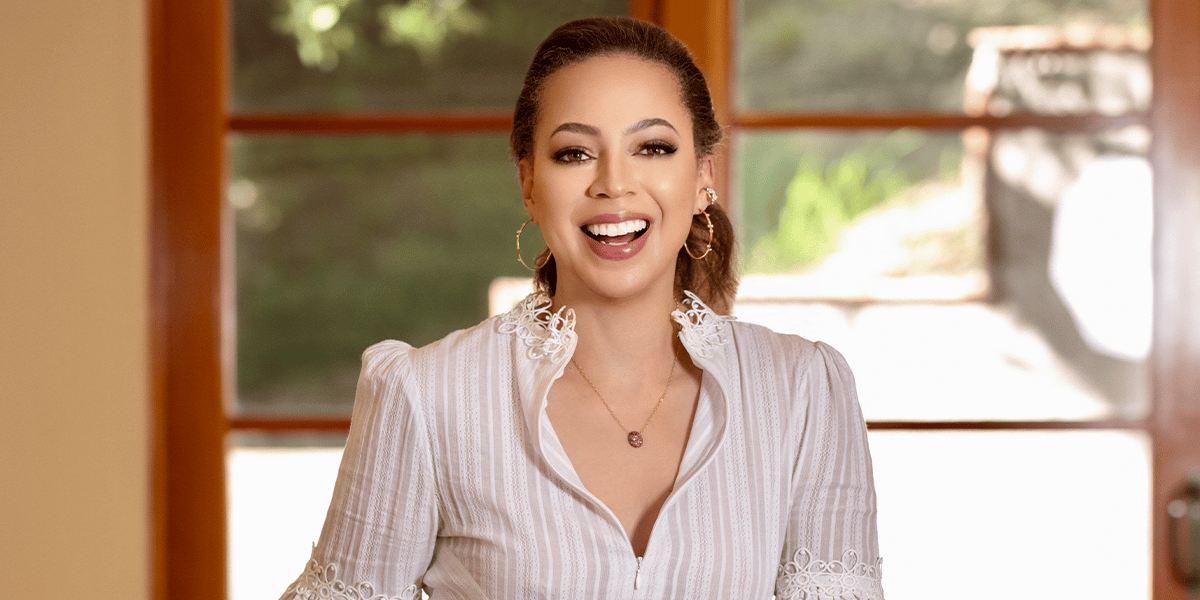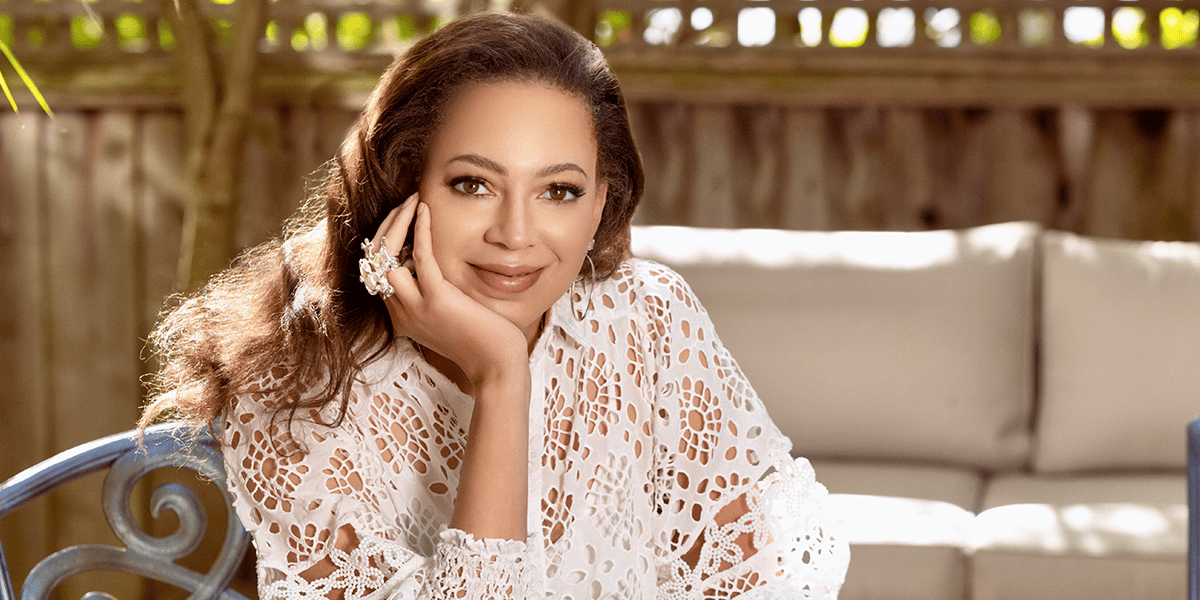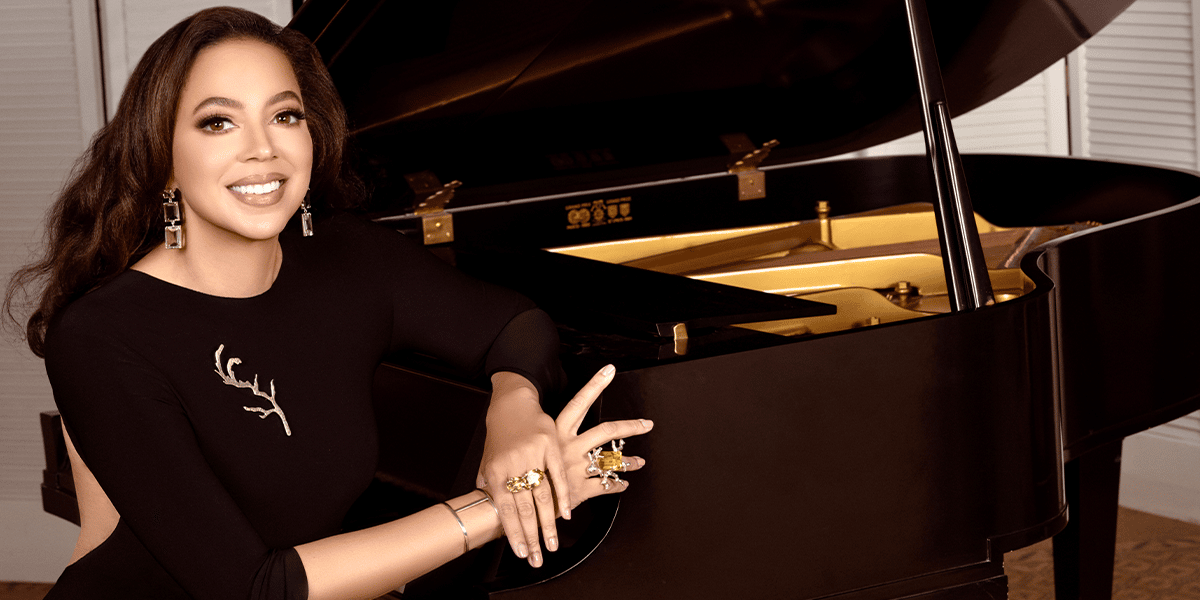Opulent Connections
Award-winning fine jewelry designer Dorian Webb on the inspirations that inform her life in design and business—and how culture and community can redefine an industry.
Interview by Timothy Diao

Dorian Webb is a natural creative. The award-winning jewelry designer and CEO grew up knowing that she had an affinity for creation. She studied architecture at Yale University and spent a year abroad in Italy, where she discovered the rich world of Venice’s artisanal design.
Its decadent handicrafts and warm culture drew her in. “I felt a kind of connection that, in a lot of ways, I felt was missing in the United States. I just felt seen and understood there. I really came into my own.”
After earning her degree, Dorian returned to Italy, determined to reunite with the glistening world she uncovered. Three decades later, from the Mediterranean to New York and now Oakland she has forged a brand that connects her to the world. Her medium of choice? Opulent gemstones and precious metals.
Dorian’s work revolves around creating meaningful ties between her jewelry, its wearer, and the surrounding world. Her jewelry takes inspiration from the organic curvatures of nature and the sense of comfort and peace it conveys. But beyond the glamour of her brand, Dorian has threaded her success with drive, intention, and karats of optimism.
Navigating her place in the world of fine jewelry was a journey in itself. She started her business with no access to resources, helpful connections, or mentors, but as the world around her changed in 2020, so did the industry.
“In the last couple of years, I have met more African-American jewelry designers than I have known in all the 30 years I have been in business. It has been a true culture shift.”
When she started out in the jewelry industry, Dorian didn’t see people in power that looked like her; however, her community is growing with the emergence of African-American creatives.
“As a group, African Americans in all disciplines have more visibility. It is now so much easier to connect with people who have similar backgrounds and experiences or want to elevate the African-American experience.”
What does being a jewelry designer mean to you? Why is it important to you?
Jewelry is something that no one needs at all. It is a form of ornamentation that is purely discretionary. And yet… the whole idea that people have chosen to ornament themselves has meaning.
I think that its ubiquity also speaks to the fact that there is a reason people wear jewelry. Jewelry is a powerful talisman. To be a part of that process and to create pieces that people desire to wear can’t be underestimated. It is a way of connecting with other people. And I think that when you wear jewelry, you wear it to say something specific to other people, to say something about yourself, to make a statement about your place in life, to protect you from things you might fear, or to comfort you.
It is critical to me that the jewelry I design not only serves to connect, but also that it elevates. I think it is important that whoever buys my jewelry today will put on their pieces 15 or 20 years from now and still feel a sense of confidence and pride in themselves; not only how they look, but in who they fundamentally ARE. That is why I do what I do.
You also mentioned the beauty of connections as a design philosophy on your website.
Yes. For me, there is great pleasure in connecting with other people. We’re social beings. And feeling connected is something important in our daily lives. When people don’t feel connected to their community on a sustained basis, it creates larger societal issues.
So if I can do something- even on a simple level like creating jewelry, that allows people to be connected and feel connected to others- that is an incredible and beautiful thing.
What was the first piece of jewelry you created for yourself and how did it make you feel?
It was probably when I was super young and I just strung some beads together. I always liked the idea of creating something out of nothing. The thought of putting various disparate little bits and pieces together in a way that makes people stop and look to acknowledge and hopefully value their intrinsic worth, brings me joy. And I think that that ties back to the whole African-American experience of being able to take whatever it is that you were given or that you have access to and synthesize that into something almost magical. It’s the gift of our ancestry and of our ancestors.

And what got you into jewelry designing? What made you choose jewelry design as a medium for your creativity?
I had always been creative growing up, just in terms of making things with my hands. And my parents believed in the idea, ‘if your child shows interest in something, support it.’ I tried other things first, but I came into my own with anything that had to do with the arts.
When I went to college, I studied architecture, which for me was a compromise. I think, especially within the African-American community, there is a little bit of fear when children go into the arts- largely because there are hopes and dreams pinned on you. A parent’s job is to ease their children’s path in the world. It is a worrying concern that their child might go into an industry that is not welcoming or that is not high paying, or that is just foreign in many ways to them.
Was your family supportive of you going into jewelry design and starting your own business?
There was a bit of trepidation. I think my dad, who was an elementary school principal, was concerned about how I would support myself and if I would be happy in the profession. So he had concerns on that front. My mom, who is an entrepreneur, however, was more understanding of the need to create a world for myself; and to be able to have agency to do what I wanted to do within that world.
Yes, there was a certain degree of worry, but in no way did that stop them from being incredibly supportive in every facet of my journey and my work.
Did you start out working for a different designer or did you go straight into doing your label?
I started my business in my Yale dorm room, however, if I were to do it again, I certainly wouldn’t have gone that route. I knew nothing about the jewelry industry. I didn’t have any mentors. There weren’t any jewelry designers who looked like me or that I had any access to. I also didn’t have enough confidence in my skill set to present myself as hireable to someone; or that I had anything to bring to the table. For me, starting out was a matter of figuring it out.
I didn’t plan to go into the jewelry business. I created a few pieces of jewelry using Venetian glass to give to my friends, and I hired a photographer to take pictures of because I wanted to have some records of them. He took the jewelry to galleries in the area that were selling his work and the galleries started placing orders. So I knew that there was a market for what I was doing and that gave me confidence to continue. It made me understand something fundamental- that I could create things that people would be interested in.
Did you ever think about practicing architecture?
I did work for some architecture firms when I was in college but I wanted to be able to create something from start to finish. I wanted to have greater control over the end product, which is not what happens in architecture. That is not to say that I regretted studying architecture, by any means.
To tie it back to Italy, prominent Italian fashion designers and designers in most fields study architecture because it encourages you to think about space; about composition and to think about the relation between objects. And more importantly, it teaches you to think about how spaces make you feel. So for me, architecture was a great field to study because it leads me to think about spatial relationships and how they impact perspectives.
I’ve also heard people say that it is better to study something other than fashion if you to work in the industry. Is architecture something that you apply to your design process?
While I was in college, I had an interest in the foundations of modern architecture, but I was always more intrigued in the interesting details and moments a building contained. I was interested in the elements that people could relate to as they experienced the building. So for me, that focus on details, that focus on connection, is still evident in my work.
A lot of your work features soft and organic shapes. Is that a defining part of your aesthetic?
For me, a lot of the value in jewelry is being able to touch it and feel comforted. So I usually turn to more organic shapes, just because I think that they feel better under your fingers. They’re more comforting to have around you. Scientists have studied the effect of nature on humans. It is deep and profound, and called biophilia. Simply put: We need nature. Not only from a biological standpoint, but also from an emotional one as well. We get something out of that relationship with nature and that is important to me to underscore.
My aesthetic is not so much about shapes, but what feels good, what is reaffirming, and what helps you feel connected to a larger continuum; something greater than yourself.

What is your creative process like? What do you consider important when you’re designing?
It has definitely iterated over time, but right now, I concentrate on what is happening in today’s world and seek to find a way to memorialize the positive without negating the truth. I don’t want to design things that look like they were made a hundred years ago that have no relation to my current experience. That is not where I am.
I get my inspiration from nature, from what I see on my daily walks, from traveling, from conversations with people, and current events.
Then the challenge is to turn that inspiration into pieces of jewelry that are aesthetically pleasing, which women want to wear, and at a price point that they can afford. My process involves thinking about all these different concerns and turning that into something that makes women feel beautiful, seen, and recognized.
How do you translate your perspective of the African-American experience into your work?
Sometimes it is literal. I designed a Black Lives Matter cuff that involved butterflies: a black butterfly that has a ribbon around one of its wings that says, Black Lives Matter. It is a big piece. It is an eye-catching piece. It is a piece that demands a conversation. At first, it draws people in with this beautiful enameled butterfly, which to me represents the idea of self determination. I believe that from its start, a caterpillar knows it is a butterfly, even if no one else recognizes it as such.
I also designed an ‘I Vote’ cuff that has little letters cut out of the metal that says ‘I Vote’. It shows the color of the wearer’s skin, again, to kind of underscore the wearer’s personal history and intent.
One of my latest diamond collections is called Bound. It consists of two different shapes that, again, have that organic quality or that unevenness to them. You can tell that they don’t quite fit together, but are joined by diamonds. And for me, it is indicative of the space and the world that we live in now, where there are these disparate elements that have no common ground. And I don’t know if they can come together except for the areas in which we’re connected by hope, which is represented by those sparkling diamonds.
What is it like to be an African-American woman in your field?
Well, I think it is changing actually. After the brutal murder of George Floyd, I think most people are more aware of the African-American experience in the US and the inequities that exist in parallel forms throughout the world. For me it brought a renewed sense of pride in my heritage, and an even greater need to connect with my community.
And with the advent of social media, and because traditional media is now turning its lens on a broader swath of the African American population, it is now so much easier to connect with other African American designers. Prior to this, it felt as if everyone was in their own individual silos, grappling with their individual struggles.
Do you feel like the 2020 Black Lives Matter movement opened up your world to your community?
Definitely. In the last couple of years, I have met more African-American jewelry designers than I have known in all the 30 years I have been in business. It has been a true culture shift.
I also know and seek out more African-American designers, artists, chefs or professionals of any sort on a daily basis. Now it is easier to connect with people who have similar backgrounds and experiences. And I feel a greater imperative to connect in a more meaningful way to my community.
Has it changed how your industry works? You mentioned earlier that you started in the industry without the access that other people might have had.
Change takes time. Structural inequalities are being exposed for what they are and there is still much work to be done, but given that, I think that incredible inroads are being made. There is greater awareness around diverse experiences, incorporating different voices, and acknowledging people who come from communities that were previously overlooked.
It is easier to find other African-American jewelry designers and to build a community nowadays. That is something that I didn’t have when I first started out. Now there are more of us in the jewelry industry, even designers beginning to work with precious stones and metals.
Initially, it was difficult for me because there weren’t many people in the industry who looked like me. I didn’t have an idea that there were easier paths to follow; so it was a matter of finding my own, making my own, and creating my own. Which involved a lot of trial and error, honestly. It didn’t involve a lot of community support.
So now, it is wonderful that people are seeking out African-American designers or people of color who speak to our shared experiences. But even with that interest, it is imperative for us each to ensure that the door remains open behind us and that the next generation does not have to fight the same battles we have had to.

And what advice would you give a young, aspiring African-American jewelry designer?
There are so many points of entry to the market that didn’t exist before, but the first thing—which I wasn’t able to do—is work with somebody who is in your chosen field. Learn as much as you can from them and use that as a foundation.
Also, define yourself so that you can create something of your own that is specific to you. Think about what your ultimate goal is. What do you want to leave to the world? And how can your business further that?
Things that have value are things that can drive a business and inspire you. That is what passion is and why it means so much.
There are so many options for self-determination in terms of how you want to create a business, how you want to create your world, how you want to treat your employees, and what materials you want to use. Whether you want to be sustainable or if you want to have a charitable component to your business, all these options are open to you now.
But it all hinges on you knowing what you want and being able to articulate that.
What kind of world would you want to leave behind to the generations that follow? Whether in your industry or community?
I just want to leave one that is better. That is easier; that is more welcoming.
It is really frustrating because it is easy to see all these areas of opportunity within the African American community, and in the greater world, and to understand in a visceral way, what is lost when people are not valued or when people are overlooked. How much we’re losing by not harnessing that energy, that intellect, that talent, and that beauty.
I don’t think impactful change has to be huge and grandiose. I do think, however, that everybody has an imperative to do their unique part to contribute to that process. A better world is reliant upon positive, intentional and interpersonal actions. I think the quotidian and the mundane have the greatest impact on future generations. And that is what cheers me. Each of us has that power to affect others, to share our perspective, to lift up those in our communities, to inspire, to teach, and to use our own particular, spectacular talents to make the world a better place for generations to come.

